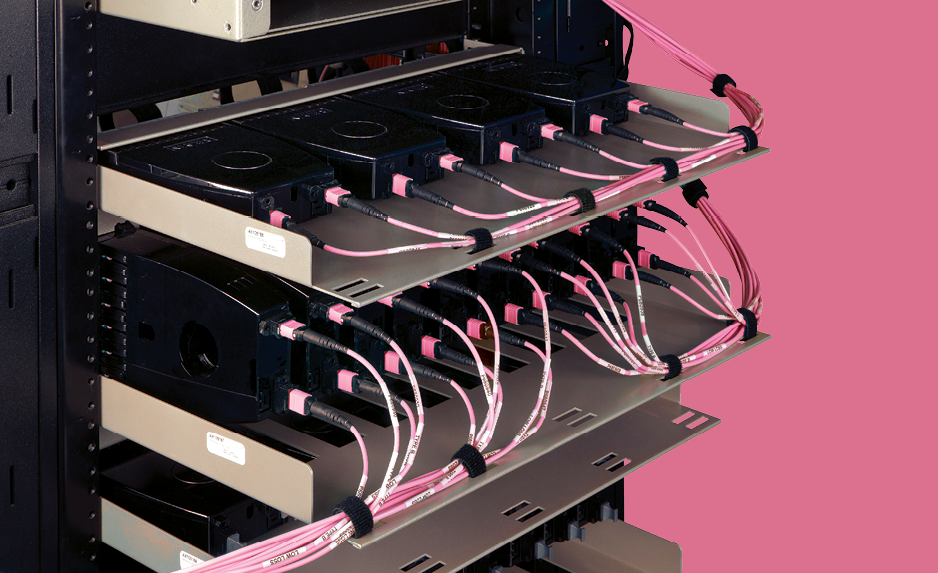4 Ways to Use Color Codes in Your Data Center
Data centers are only effective when they run—and a layer of visual management can drastically reduce the opportunity for human error, which leads to money-wasting downtime.
Using color codes allows technicians to get immediate information about network connections literally at a glance—a very powerful tool in making sure mistakes aren’t made during maintenance or fixes. Although the print legend on the cable will tell you what grade of cable you’re working with, it can be extremely hard to locate and read.
Color codes offer a universal way to identify and separate nearly anything. Let’s take a closer look at how color codes can be used in data centers to reduce human error simplify maintenance.
1. Distinguishing Fiber Grades
TIA has established standard color codes to identify fiber grades for indoor environments. Other colors may be used in your data center’s color scheme as long as the print on the outer jacket of the cable identifies the fiber grade properly. In other words, there is flexibility within this standard however, it's important to be aware of any special agreements between the manufacturer and purchaser that may changed a standard color.
TIA Color-Coding Standard
- Multimode OM1 (orange)
- Multimode OM2 (orange)
- Multimode OM3 (aqua)
- Multimode OM4 (aqua or Erika violet)
- Singlemode OS1 or OS2 (yellow)
Some fiber grades are represented by the same colors (e.g., orange represents OM1 and OM2) which may lead to confusion for technicians, opening up the potential for two different fiber grades to be accidentally mixed together. Because OM1 and OM2 have different core diameters, there is significant loss potential when fiber grades are mixed and matched resulting in high bit error rates negatively impacting throughput and network performance.
Mixing and matching OM3 and OM4 fiber can be particularly troublesome as it may work initially, despite the mix-up. Over time, as temperature swings are encountered, patch cords are moved and active components begin to age, bit error rates increase intermittently. Given the time lag, mixing OM3 and OM4 fiber may never be diagnosed as the root cause leading to misguided troubleshooting efforts.
Belden has standardized on Erika violet for OM4 fiber to help avoid the potential for human error and bit error rates while ensuring network uptime and performance.

2. Identifying Fiber Jumpers (Patch Cords)
Using color codes to label patch cords is another way to reduce the potential for human error. Highlighting mission-critical patch cords in red and ensuring technicians are aware of management protocols can go a long way. Be sure to keep the fiber connector color consistent with fiber-grade color standards so techs can still easily identify different fiber grades.
3. Port Icons
A port icon system involves color codes—using port icons that slide over fiber adapters can be helpful to identify different network routings in accordance with internal needs. Tagging each patch panel port simplifies and streamlines network management.
4. Differentiating Connector Boots
Color codes can also be used on connector boots to make routine maintenance and moves, adds and changes easier by helping technicians preserve correct parallel groupings for switch ports. If a connector color is changed, it's important to ensure the fiber cable color represents the fiber grade to minimize confusion. Similarly, you can change the color of a connector boot to differentiate between different aspects of the network making it easy for technicians to work within a panel.
Learn more about Belden data center color coding solutions.
![System.String[]](https://assets.belden.com/transform/b644105f-457b-4536-8d75-c1c47663e660/matt-hurst?io=transform:fill,width:300,height:300)